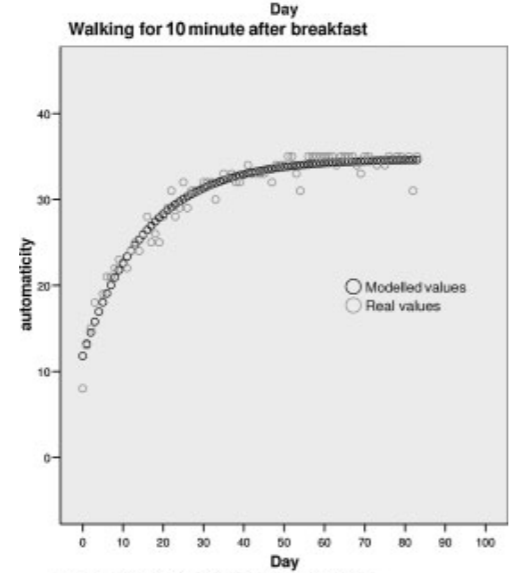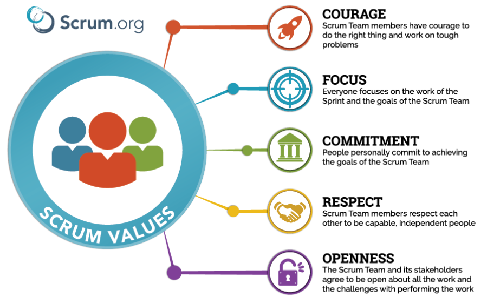Agile definitely demonstrated to be the best approach for organizations to keep up with changes that happen due to economic, social or even health sudden new scenarios: companies are able to quicker and better adapt and proactively respond to disruptions. But, as for any changes, it is hard and it is not for free. It implies the acquisition of new competences, skills and behaviors, which should lead to new organizational processes, structures, models. How much does it cost to create new habits replacing the old one? What we can do to accelerate that process towards more agility?
Since the prehistoric ages, human beings are always seeking for the best way to do things by creating most value with least effort. Some may call this laziness, others surviving. Actually, at that time this was the only way to remain alive and survive to the very threats our ancestors were facing every single day of their lives.
This is the reason why nature and species evolution developed a mental system that is able to learn from past experiences, packing them together in programs, automatism and heuristics, which are ready-to-use approaches or behaviors, we use automatically when facing certain situations. Why? It’s easy, it’s cheaper in terms of energy our body and brain spend, it’s practical and quick (moreover in situations where we are at risk).
But, that is only part of the story.
Daniel Kahneman, psychologist and economist awarded in 2002 with Nobel Memorial Prize in Economic Sciences, wrote a great book (Thinking, Fast and Slow) that explains in depth how our brain works in such situations.
Summarizing very briefly his study, people use two different systems of thinking:
- System 1 (cheaper to activate). It operates quickly, automatically, intuitively, involuntary, and effortlessly: when we drive, read an angry facial expression, or recall our age.
- System 2 (definitely more expensive). It is used when necessary to slow down in solving problems or when are needed kind of reasoning, computing, focusing, considering other data; used when we shall not not jump to quick conclusions, like when we calculate a math exercises, choose where to invest money, or fill out a complicated form.
Guess what system we need to activate when it’s time to change our behaviors and habits?

You got it, the second one. System 2 is used when we are asked to change. So, be prepared, you are going to consume much of glucose you have in your blood. Starting from now.
“Acquisition of skills requires a regular environment, an adequate opportunity to practice, and rapid and unequivocal feedback about the correctness of thoughts and actions”
Acquiring New Habits
When it’s time to change we need to get rid of old habits and create new ones. Right, but how much does it cost to create a new habit? What’s the effort? How much time?
It’s a common belies that to build a new simple habit, you need to exercise that one for 21 days. Well, it seems that number is not supported by any scientific studies and thus totally unreliable. We need to go deeper. Follow me.
Dr Phillippa Lally, conducted a study which helps us to better understand how human being create a new habit and how to leverage this piece of information when it’s time to help people to change, such as they need to embrace Agile culture, mindset and practices.
The study is named “How are habits formed: Modelling habit formation in the real world” and regarded 96 volunteers that chosen a new eating, drinking or activity behavior to carry out daily in the same context for 12 weeks.
The objective of the study was to understand how many days are necessary for a new executed action, to reach the plateau in terms of automatism and automaticity to be finally considered an installed habit in the brain of the practitioner.
Her study highlighted some interesting key aspects of creating new habits:

- Repeating a behavior in a consistent setting increases automaticity
- Extrinsic rewards are not required for creating a new habit
- Intrinsic rewards increases likelihood of creating a new habit
- Simple and more effortless new behaviors (e.g. drinking water every x hours) are performed more often than tiresome ones (exercising every day)
- Missed opportunity to exercise the new habit (e.g. forgetting to practice for one day) did not materially affect the habit formation process
- Missing an entire week’s worth of opportunities to exercise, reduces the likelihood of future performance and hinders habit acquisition
Coming to results, the average modeled time to plateau in that sample was 66 days; we need though consider that the range was from 18 to 254 days.
What can we do when we want to embrace new habits at organizational level to facilitate change management endeavor?
Training the Organizational Agile Muscle
Habits are necessary for remaining effective and productive.
Motivation, discipline, reiteration and will power need to be maintained for a significant period before the desired behaviors acquire the necessary automaticity to be performed without self-control.
This is true for every single person. What can we do when we want to embrace new habits at organizational level to facilitate change management endeavor?
This is where Agile comes into play.
We said and appreciated several times, that Agile is a means to acquire organizational adaptability, becoming nimble. If you want to go deeper you can read these posts:
- Do not give up. Being Agile is the answer
- Customers, Employees and Communities, first; then, Shareholders
- Morphing continually to achieve Business Agility
Proceeding one step further, Scrum (the lightweight agile framework) can be thought as the gym where you can train your ability to practice, persist and create value, in order to establish the necessary new Agile habits to respond to any emerging new market needs. How?

1) Scrum provides cadence: sprints are usually 2 weeks time-box duration, within which precise events (Planning, Stand-up, Review, Retrospective) happen at the same days and time, with the same length. This is a self-reinforcing mechanism for habits.
2) Every event has its own execution reference framework, which ease understanding for participants in terms of inputs, steps and expected outcomes. This gives confidence and relieve some stress for newbies, which accelerates the whole habit formation progress.
3) Scrum is a team exercise, where trust, mutual commitment and a healthy social pressure, by design, level out motivation peaks of single team members. This paves the way for not missing any opportunity to continue to exercise the new habits.
4) Scrum provides the Scrum Master role to be the coach of the team, always aiming to continuous improvement and encouraging positively to persevere. She is also in charge to eliminate any impediments the team finds in its legs, to not disrupt the pace.
5) Scrum provides the Product Owner role which gives vision and motivation to the team, to remain focused towards the objectives.
6) Scrum lays a noble platform of principles thanks to the inherited Agile Manifesto and its own 5 values, which all together create the conditions for people to leverage on their intrinsic talents and passions, which per-se stimulate their personal intrinsic motivation.

Isn’t it the best gym to learn and train new Agile habits?
Obviously any change management endeavor needs to be seriously taken into account by thinking on how to appropriately create the right competences through, training, coaching, modifying the context and developing a roadmap to sustain it.
But practicing that way, in addition to the capacity of Agile to stay closer to the customer (and the market) injecting feedback every sprint, iterating on it and responding adequately, makes us confident in saying that Doing Agile right, can help your company to build the necessary habits and muscles for Being and Remaining Agile in pursuing their business objectives.


